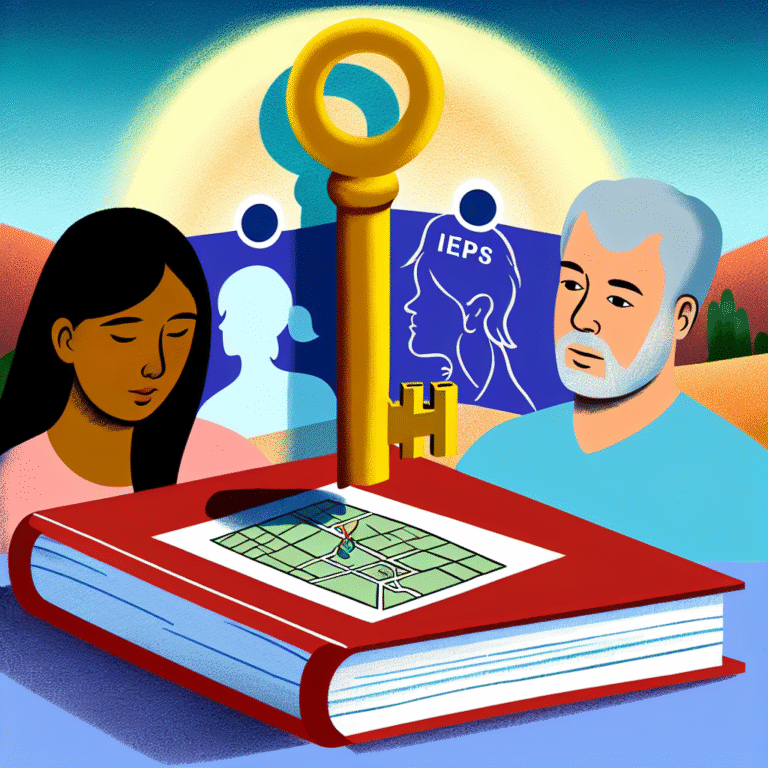
Navigating the Financial Maze: Essential Support Options for Parents of Learning-Disabled Children
Introduction
Raising a child with learning disabilities can feel like traversing a complex labyrinth. Not only do parents grapple with emotional, social, and educational challenges, but financial hurdles also loom large. Navigating the financial maze can be overwhelming, leaving many parents feeling lost. Fortunately, there are various resources and support options designed to help families find their way. In this guide, we will delve into the critical support options for parents of learning-disabled children, offering unique insights and actionable advice.
Understanding Learning Disabilities
What Are Learning Disabilities?
Learning disabilities are neurological conditions that affect how individuals process information. These disabilities can manifest in various ways, including difficulties with reading (dyslexia), writing (dysgraphia), math (dyscalculia), and various processing issues.
The Emotional Toll on Families
The emotional impact of raising a child with learning disabilities cannot be underestimated. Feelings of frustration, loneliness, and anxiety can often cloud the journey. Parents may question their methods or worry about their child’s future, which can lead to increased stress levels.
Case Study: The Johnson Family
The Johnsons are a typical family facing the challenges of learning disabilities. Their son, Ethan, was diagnosed with dyslexia in the second grade. Initially overwhelmed by the costs associated with specialized tutoring, the Johnsons felt lost in an intimidating financial landscape. However, their journey led them to discover invaluable resources, teaching them to navigate the financial maze.
Financial Resources and Support Options
Public School Resources
Most public schools are mandated by law to provide support for children with learning disabilities. Understanding these legal rights is crucial for parents.
Individualized Education Program (IEP)
An IEP is tailored to meet the specific needs of a child with learning disabilities. It outlines educational goals and any additional services required.
| IEP Components | Description |
|---|---|
| Present levels of performance | Assessment of current academic and functional performance |
| Annual goals | Specific, measurable goals to be achieved within a year |
| Special services | Details of any additional support like speech therapy, etc. |
504 Plans
If a student does not qualify for an IEP, a 504 Plan may still provide reasonable accommodations. This plan ensures that the child has equal access to education.
Private School Options
For some families, private school might be a better fit. Many private institutions specialize in teaching children with learning disabilities. However, the costs can be substantial.
Tuition Assistance Programs
Many private schools offer scholarships or sliding-scale tuition rates for families in need. Investigating these options can significantly lessen the financial burden.
State and Federal Programs
There are several government-funded programs aimed at assisting families.
Medicaid Waivers
These waivers provide financial assistance for children with disabilities to receive specialized services. Eligibility varies by state, so it is crucial for parents to explore local options.
Special Education Grants
Many states offer grants to assist families with the costs related to special education. These funds can cover tutoring, therapy, and other educational expenses.
Tax Credits and Deductions
Parents can also take advantage of various tax credits and deductions to ease the financial burden.
Medical Expense Deductions
Expenses related to special education, including therapy and tutoring, may qualify as tax-deductible medical expenses.
Child and Dependent Care Credit
This credit allows parents to claim a percentage of care expenses for children with disabilities, helping to offset daycare costs.
Case Study: The Smith Family
The Smiths were struggling to afford Ethan’s tutoring when they learned about their state’s Medicaid Waiver program. With financial support, they were able to access the help Ethan needed. This real-life example illustrates how exploring various programs can lead to critical financial relief.
Community Resources
Local Non-Profit Organizations
Countless local organizations offer support to families of children with learning disabilities. These organizations often provide:
- Financial Assistance: Some offer scholarships or funding for necessary resources.
- Support Groups: Connecting with other parents allows for shared experiences and solutions.
- Workshops: Many organizations host workshops to educate parents about available resources.
Online Communities and Forums
Websites and social media groups can be excellent avenues for parents to seek advice and share experiences regarding financial strategies for supporting learning-disabled children.
Case Study: Online Support Networks
The Thompson family found their footing through an online forum dedicated to learning disabilities. They connected with other parents and discovered local resources they had previously overlooked. Their success is a testament to the power of community.
Planning for the Future
Savings Accounts for Special Needs
Setting up a savings account specifically for the care of a child with learning disabilities can be beneficial. These accounts often come with tax advantages and can help prepare for future expenses.
Special Needs Trusts
A Special Needs Trust is another option. This financial tool ensures that funds are available for the child’s needs while allowing them to qualify for government benefits.
Case Study: The Roberts Family
The Roberts family set up a special needs trust for their daughter Lily, who has a severe learning disability. This proactive step gave them peace of mind knowing Lily’s future needs would be cared for, even after they were gone.
Conclusion
Navigating the financial maze as a parent of a learning-disabled child may seem daunting, but numerous resources and support systems are available. From school programs to community organizations, and financial assistance options, every avenue is worth exploring. Remember, taking the first step is often the hardest, but it opens a world of support and resources you may not yet know exists.
Be proactive in seeking assistance, collaborating with others, and educating yourself about the rights and resources available. You don’t have to traverse this maze alone; support is just a step away.
FAQs
1. What is the first step I should take when my child is diagnosed?
The first step is to understand your child’s rights under the Individuals with Disabilities Education Act (IDEA) and begin the process of creating an Individualized Education Program (IEP) if applicable.
2. Can I use Medicaid to pay for my child’s tutoring?
While Medicaid does provide some coverage for therapy and special services, it typically does not cover traditional tutoring. However, it’s best to check with your local Medicaid office for specifics.
3. Are there scholarships available for children with learning disabilities?
Yes, many organizations offer scholarships for children with learning disabilities, particularly those attending private schools or specialized programs. Research local and national organizations for specific offerings.
4. What tax breaks can I potentially benefit from?
Parents can benefit from medical expense deductions, the Child and Dependent Care Credit, and sometimes even state-level credits depending on your location and financial situation.
5. How can I connect with other parents for support?
Online forums, local support groups, and social media channels are excellent ways to connect with other parents who understand your situation.
By leveraging each avenue available to you, you can navigate the financial maze and provide the best support for your learning-disabled child. Don’t hesitate to seek out these resources to enhance your family’s journey.






